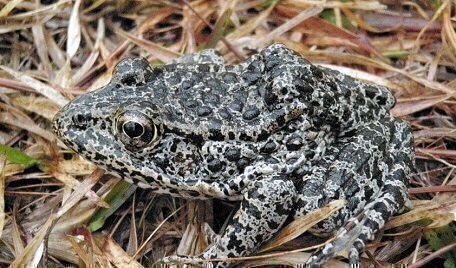On Tuesday, the Supreme Court ruled that a dispute over the dusky gopher frog needs to head back to a federal appeals court to decide the definition of one word: habitat.
 Chief Justice John Roberts said that question should be reviewed by the Fifth Circuit before the case moves forward. Justice Brett Kavanaugh did not take part in the unanimous decision, since arguments were heard before he joined the court.
Chief Justice John Roberts said that question should be reviewed by the Fifth Circuit before the case moves forward. Justice Brett Kavanaugh did not take part in the unanimous decision, since arguments were heard before he joined the court.
The case of Weyerhaeuser Company v. United States Fish and Wildlife Service centers on the issue of whether land in Louisiana can be dedicated as a “critical habitat” to protect the endangered dusky gopher frog, which currently doesn’t live in the state.
The small population of gopher frogs resides in Mississippi. The Fish and Wildlife Service ordered a 1,500-acre tract of privately owned land in Louisiana protected as a potential breeding and living space for the frogs as a “critical habitat.” Some changes would need to be made to that land to make it more frog-friendly. Weyerhaeuser and other parties claimed the Fish and Wildlife Service designation cost them $34 million in lost development value of the land.
“Our analysis starts with the phrase ‘critical habitat.’ According to the ordinary understanding of how adjectives work, ‘critical habitat’ must also be ‘habitat.’ Adjectives modify nouns—they pick out a subset of a category that possesses a certain quality. It follows that ‘critical habitat’ is the subset of ‘habitat’ that is “critical” to the conservation of an endangered species,” Roberts said in a grammar lesson that explained the Fifth Circuit’s upcoming homework assignment.
Roberts said the Fifth Circuit didn’t initially consider part of the Endangered Species Act that “is the sole source of authority for critical-habitat designations. That provision states that when the Secretary lists a species as endangered he must also ‘designate any habitat of such species which is then considered to be critical habitat,’” Roberts said.
“The Center for Biological Diversity contends that the statutory definition of critical habitat is complete in itself and does not require any independent inquiry into the meaning of the term ‘habitat,’ which the statute leaves undefined,” Roberts noted, which posed a conflict.
“That is no baseline definition of habitat—it identifies only certain areas that are indispensable to the conservation of the endangered species. The definition allows the Secretary to identify the subset of habitat that is critical, but leaves the larger category of habitat undefined,” Roberts concluded.
Roberts also said the Fifth Circuit needed to “consider whether the Service’s assessment of the costs and benefits of designation was flawed in a way that rendered the resulting decision not to exclude Unit 1 arbitrary, capricious, or an abuse of discretion.” The Fifth Circuit didn’t consider that question out of respect to “agency discretion.”
For now, the case will be retried and it could return to the Supreme Court at a later date if the losing side can convince at least four Justices to accept a new appeal.
Scott Bomboy is editor in chief of the National Constitution Center.






